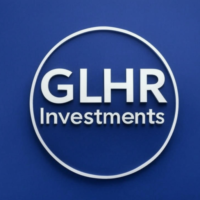
Build a resilient portfolio for 2025’s volatile economy.
At GLHR Investing, we’re equipping you with strategies to build a robust stock portfolio in 2025’s volatile economy, where the S&P 500 (SPY) is down 4.8% year-to-date at $513.88 as of May 23. With Trump’s tariffs, 3.5–4% inflation, and a 60% recession risk looming, a recession-proof portfolio is essential to safeguard wealth and seize opportunities. From defensive stocks to diversification, here’s a comprehensive guide to constructing a resilient portfolio that balances stability and growth, with actionable steps for today’s economic challenges.
- 2025 Economic Landscape: Key Challenges:
- Market Volatility:
- SPY fell 15.6% YTD, with a 0.87% May drop and 0.5–1% decline in June’s first week (June 1–6), nearing bear market territory (17.6% from February’s $613.23 peak), per prior analyses and X post (@kautiousCo).
- Russell 2000 (small-caps) dropped ~19% YTD, while Nasdaq lagged (~0.8–1.2% in June) due to tech sell-offs, per prior analyses.
- VIX at ~20.6 and Fear & Greed Index at ~45 (neutral) signal persistent uncertainty, per web data.
- Economic Indicators:
- Q1 GDP contracted -0.3%, with Q2 estimated at 1.5–1.9%, below 2024’s 2.7%, driven by tariffs and 13% spending cuts, per web data.
- Inflation rose from 3% (March) to 3.5–4% (June), with 6.7% expectations, fueled by 50% steel tariffs (June 4), adding $1,200/household in costs, per prior analyses.
- Unemployment hit 4.2% (April), with job growth at ~100,000/month, slowed by federal layoffs and immigration curbs (~500,000 net), per web data.
- Consumer sentiment sank to 50.8, a 12-year low, with retail spending down 13%, per prior analyses.
- Trump’s Policy Impacts:
- Tariffs: 125% on China, 25% on Canada/Mexico (paused until July 9), and 50% steel tariffs (June 4) raised costs, disrupting supply chains, per web data. The May 28 IEEPA tariff ruling halted some tariffs, with an ongoing appeal, per prior analyses.
- OBBBA (May 22): $3.7T tax bill extended TCJA rates, added no tax on tips/overtime, and increased child tax credit ($2,500), boosting spending (0.3–0.5%) but adding $3.2–$4.1T deficits, pushing 10-year yields to 4.28%, per web data.
- Immigration Curbs: Reduced net immigration to ~500,000, supporting wages (4.64% vs. 2.3% inflation) but straining labor-intensive sectors, per web data.
- Deregulation: Pro-business policies (e.g., CHIPS Act, DOGE cuts) spurred domestic investment but increased unemployment, per web data.
- Recession Risk:
- J.P. Morgan estimates a 60% recession probability by year-end, with the Federal Reserve Bank of Atlanta’s GDPNow forecasting a >2% Q1 contraction, per web data.
- Inverted yield curve and declining consumer confidence (50.8) signal heightened risks, per web data.
- Market Volatility:
- Strategies for a Recession-Proof Portfolio:
- Prioritize Defensive Sectors:
- Why It Works: Defensive stocks in healthcare, consumer staples, utilities, and telecom provide essential goods/services, maintaining demand during downturns, per web data.
- Action: Allocate 30–40% to defensive sectors to stabilize returns, focusing on companies with low debt, strong cash flows, and consistent dividends, per web data.
- Examples:
- Johnson & Johnson (JNJ): ~$140, 3% yield, up ~5% YTD, stable healthcare demand, per web data.
- Procter & Gamble (PG): ~$165, 2.4% yield, up ~5% YTD, consumer staples leader with 69-year dividend streak, per web data.
- Verizon (VZ): ~$43, 6.2% yield, down 12% YTD but resilient telecom demand, per prior analyses.
- Incorporate High-Quality Dividend Stocks:
- Why It Works: Dividend stocks provide passive income, offsetting price declines, with Dividend Aristocrats (25+ years of increases) offering stability, per web data.
- Action: Target stocks with payout ratios <60% and yields >2%, ensuring sustainability, per web data.
- Examples:
- PepsiCo (PEP): ~$165, 3% yield, up ~3% YTD, 53-year dividend streak, per web data.
- Coca-Cola (KO): ~$65, 2.8% yield, up ~4% YTD, consumer staples resilience, per web data.
- Diversify Across Asset Classes:
- Why It Works: Diversification reduces risk by spreading investments across stocks, bonds, and alternatives that don’t move in tandem, per web data.
- Action: Maintain a 60/30/10 allocation (stocks/bonds/alternatives), adjusting based on risk tolerance, per web data.
- Asset Classes:
- U.S. Treasury Bonds: Safe-haven with steady income, gaining value as rates may fall (3.50–3.75% by year-end), per web data.
- Gold (GLD): Up 3% YTD, hedges inflation and volatility, allocate 3–5%, per web data.
- REITs: Focus on recession-resistant sectors like self-storage (e.g., Extra Space Storage, EXR, ~$60, 4% yield), per web data.
- Focus on Strong Fundamentals:
- Why It Works: Companies with low debt-to-equity ratios (<1), positive earnings, and strong cash flows weather downturns better, per web data.
- Action: Use stock screeners to identify firms with P/E <20, debt-to-equity <1, and cash flow per share >10, per web data.
- Examples:
- Walmart (WMT): ~$80, 1% yield, up 15% YTD, strong balance sheet and recession-proof retail, per web data.
- Waste Management (WM): ~$200, 1.5% yield, up ~8% YTD, essential services, per web data.
- Embrace Dollar-Cost Averaging:
- Why It Works: Investing fixed amounts regularly reduces the impact of volatility, lowering average purchase prices during downturns, per web data.
- Action: Set up automatic investments ($500–$1,000/month) in diversified ETFs or blue-chip stocks, per web data.
- Example: Invest in SPDR S&P 500 ETF (SPY) or iShares Core Dividend Growth ETF (DGRO, 2.3% yield) for broad exposure, per web data.
- Maintain Cash Reserves:
- Why It Works: A 6–12 month emergency fund prevents forced stock sales during market dips, preserving long-term gains, per web data.
- Action: Hold 5–10% of portfolio in cash or money market funds, ready to buy dips, per web data.
- Avoid Panic Selling:
- Why It Works: Historically, markets recover post-recession (e.g., S&P 500 rebounded in <6 years after 2008), and selling locks in losses, per web data.
- Action: Stick to a long-term plan, rebalancing annually to maintain target allocations, per web data.
- Prioritize Defensive Sectors:
- Top Stocks for a Recession-Proof Portfolio:
- Johnson & Johnson (JNJ):
- Price: ~$140, Yield: 3%, YTD: Up ~5%.
- Why: Healthcare giant with stable demand, low debt, and 60+ years of dividend increases, per web data.
- Action: Buy on dips near $130, target $150–$160.
- Procter & Gamble (PG):
- Price: ~$165, Yield: 2.4%, YTD: Up ~5%.
- Why: Consumer staples leader with 69-year dividend streak, resilient to spending cuts, per web data.
- Action: Buy near $160, target $175–$180.
- Verizon Communications (VZ):
- Price: ~$43, Yield: 6.2%, YTD: Down 12%.
- Why: High-yield telecom with essential services, tariff-immune, per prior analyses.
- Action: Buy near $40, target $48–$50.
- PepsiCo (PEP):
- Price: ~$165, Yield: 3%, YTD: Up ~3%.
- Why: Consumer staples with 53-year dividend streak, stable demand, per web data.
- Action: Buy near $160, target $175–$185.
- Walmart (WMT):
- Price: ~$80, Yield: 1%, YTD: Up 15%.
- Why: Defensive retail with strong cash flows, benefits from value-driven spending, per web data.
- Action: Buy on dips near $75, target $85–$90.
- Coca-Cola (KO):
- Price: ~$65, Yield: 2.8%, YTD: Up ~4%.
- Why: Consumer staples with global brand resilience, per web data.
- Action: Buy near $60, target $70–$75.
- Waste Management (WM):
- Price: ~$200, Yield: 1.5%, YTD: Up ~8%.
- Why: Essential waste services, recession-proof demand, per web data.
- Action: Buy near $190, target $210–$220.
- Duke Energy (DUK):
- Price: ~$110, Yield: 4%, YTD: Up ~5%.
- Why: Utility with consistent revenue and high dividends, per web data.
- Action: Buy near $100, target $120–$125.
- NextEra Energy (NEE):
- Price: ~$80, Yield: 2.5%, YTD: Up ~6%.
- Why: Renewable energy utility with stable cash flows, per web data.
- Action: Buy near $75, target $85–$90.
- Extra Space Storage (EXR):
- Price: ~$60, Yield: 4%, YTD: Up ~5%.
- Why: Self-storage REIT with recession-resistant demand, per web data.
- Action: Buy near $55, target $65–$70.
- Johnson & Johnson (JNJ):
- Investor Strategy:
- Portfolio Allocation:
- Stocks (60%): 40% defensive (JNJ, PG, VZ), 20% growth-oriented with strong fundamentals (WMT, WM), per web data.
- Bonds (30%): 20% U.S. Treasuries, 10% investment-grade corporates for income and stability, per web data.
- Alternatives (10%): 5% gold (GLD), 5% REITs (EXR) to hedge inflation and volatility, per web data.
- Risk Management:
- Diversification: Spread investments across sectors (healthcare, staples, utilities) and asset classes to reduce losses, per web data.
- Cash Reserves: Maintain a 6–12 month emergency fund to avoid selling during downturns, per web data.
- Rebalancing: Adjust annually to maintain target allocations, avoiding panic selling, per web data.
- Timing:
- Buy on SPY dips near $490–$500 or Russell 2000 pullbacks to capitalize on value, per Trade That Swing.
- Use dollar-cost averaging ($500–$1,000/month) to mitigate volatility, per web data.
- Key Catalysts to Monitor:
- July 9 Tariff Deadline: Reinstatement of 125% China tariffs could raise costs 10–20%, impacting non-defensive sectors, per web data.
- U.S.-China/EU Trade Talks: Resolutions could lift SPY 3–5%, easing supply chain pressures, per web data.
- June 17–18 FOMC Meeting: Rate cut signals (25 bps in September) could boost small-caps and consumer spending, per X post (@grok).
- Q2 Earnings (July): Confirm defensive sector stability and small-cap growth (42% forecast), per web data.
- OBBBA Senate Progress: Deficit concerns may push yields to 4.5–5%, pressuring valuations, per prior analyses.
- Consumer Spending: 13% retail cuts and 50.8 sentiment gauge demand for defensive stocks, per prior analyses.
- Risks:
- Tariff Escalation: 125% China tariffs could disrupt supply chains, hitting cyclical stocks, per J.P. Morgan.
- Recession Impact: 60% probability could reduce consumer demand, though defensive stocks are less affected, per web data.
- Inflation Surge: 4–4.5% inflation may delay rate cuts, limiting market recovery, per web data.
- Deficit-Driven Yields: OBBBA’s $3.2–$4.1T deficit could raise yields, impacting growth stocks, per web data.
- Overvaluation: Defensive stocks may face price pressure if investors bid up valuations, per web data.
- Portfolio Allocation:
- Conclusion: Building Resilience in 2025:
- In 2025’s volatile economy, a recession-proof portfolio hinges on defensive sectors (healthcare, staples, utilities), high-quality dividend stocks, and diversified assets (bonds, gold, REITs) to weather Trump’s tariffs, 4% inflation, and a 60% recession risk. By prioritizing companies with strong fundamentals (JNJ, PG, WMT) and using dollar-cost averaging, investors can mitigate losses and position for recovery. With SPY down 15.6% YTD, strategic allocations and disciplined rebalancing are key to thriving amid uncertainty.
- Why It Matters: The 2025 economy, rocked by tariffs, deficits, and recession fears, demands a portfolio built for resilience. Defensive stocks like Verizon (6.2% yield) and Walmart (up 15% YTD) offer stability, while diversification and cash reserves protect against volatility. GLHR Investing is your guide to crafting a recession-proof portfolio, ensuring your wealth endures and grows in a challenging market.
Invest smart with GLHR Investing—build a fortress, secure your future!
Disclaimer: GLHR Investing is not a financial adviser; please consult one.








